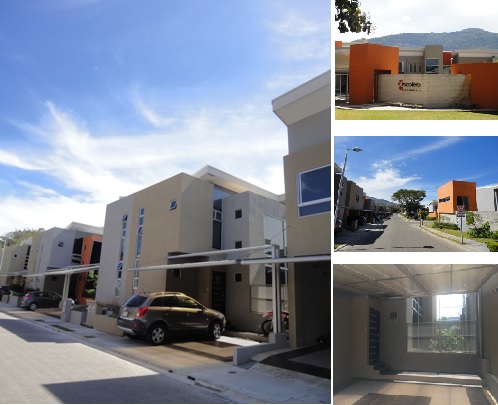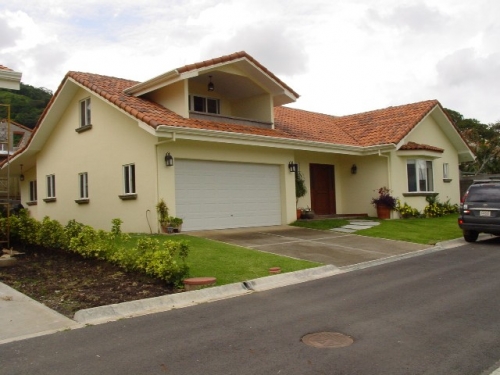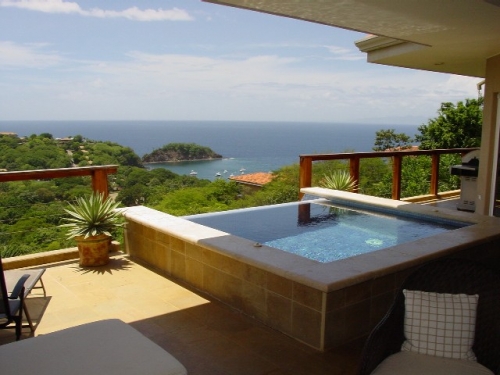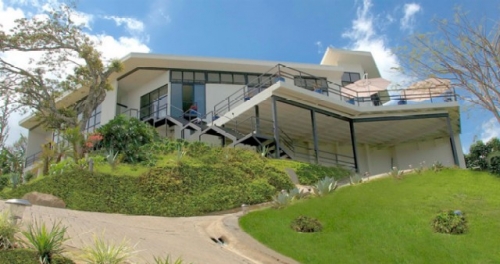Costa Rica Guide
Costa Rica Real Estate
List your property today!
Inclusion of real estate listings at Costa Rica Guide is
absolutely free of charge.
Featured Properties
Costa Rica Guide - Costa Rica Real Estate
Bridge opens up Costa Rica's scenic Pacific Coast area
James Beck
The Post and Courier
September 28, 2003
SAMARA, COSTA RICA-A new door has opened up to Costa Rica's beautiful Nicoya Peninsula on the Pacific Coast, thanks to the government of Taiwan.
This new doorway to the Pacific is the $27 million Taiwan Friendship Bridge. It almost certainly will have a huge economic impact on the Nicoya Peninsula, which before the bridge's opening last spring was practically cut off from the rest of Costa Rica, except by ferry.
The new bridge trims an hour (sometimes two hours, depending on the ferry) off the travel time from the country's capital city and main entry point, San Jose, to the Pacific Coast. Before the bridge's opening, travelers either took a ferry across the Tempisque River, drove far north around the river's headwaters or flew in on small airplanes.
When my family and I started thinking about returning to Costa Rica this summer for a vacation, one of the first questions I asked was about the bridge. The bridge made our decision to return to the sleepy Pacific Coast village of Samara an easy one to make.
With the new bridge and an excellent asphalt highway that leads to the coast, Samara and other beach villages soon may spring to life. Young American entrepreneurs, as well as Europeans, already have started arriving, opening small businesses with an eye on an economic explosion.
But for now, Samara remains somewhat secluded. Cowboys on horses still herd cattle down Main Street.
The Hotel Las Brisas, where we have spent much of our last two vacations, is a paradise within an oasis. A picturesque tiled, open-air restaurant rests next to a beautifully tiled swimming pool, surrounded by various fruit trees that are home to brightly colored birds and iguanas. The coconut tree-lined beach is only a few yards away. A breathtaking beach scene is dominated by a small, rugged rock-jutting, tree-covered island planted in the middle of the cove's entrance, infringing on the expanse of the looming infinity of the Pacific Ocean.
About 5 kilometers to the south of Samara is its sister cove, Carrillo. In the rainy season, the road ends in Carrillo. Sunsets here are world class. The favorite spot is the Mirador Restaurant, an open-air facility that sits on a cliff overlooking the Pacific and Carrillo cove, where we snorkeled one afternoon.The sunset is spectacular. So are the hospitality and the large sea bass that are fried whole and are accompanied by rice, stir-fried vegetables and fried plantains (similar to bananas) for the sum of 2,500 colones (all of $6.25). The sea bass hangs off both ends of the 12-inch platter. It's a couple of inches thick, and its mild white meat needs no seasoning. The sea bass and large shrimp motivated us to jump in a cab ($7.50 roundtrip) and return to the Mirador evening after evening.
Although the sea bass aren't boneless, the bones are manageable. To offer proof, one night while we were dining with a couple and two teen-agers from California, the boy in the group was one of five in the party of eight to order the sea bass. He practically gulped the whole thing down. By the time I flipped my bass over to the other side, only the skeleton remained from his fish.
Nosara, with its marvelous and scenic beaches, is about 50 kilometers to the north, but the trip takes a couple of hours on a dirt road that goes through, rather than over, shallow creeks. Drivers slow repeatedly for deep mud puddles. The road offers scenic views of a rolling countryside, flowers speckled along the road, cows and horses grazing in lush, green meadows. It's not uncommon for motorists to stop to allow chickens and hogs to cross in front of them as schoolchildren walk alongside the road. Although the standard mode of travel for visitors is the SUV, our driver Delphin's little red Toyota puttered along through the mudholes and creeks. Costa Rica's rainy season falls during Americans' prime vacation months of summer and extends through the fall. Still, that's no reason not to plan a summer visit to this small Central American country.
The rainy season in Costa Rica, at least in July and August, isn't a monsoon. Rain usually falls in the afternoon and night.
You can expect dry and sunny mornings.
Seven o'clock in the morning is an ideal time to head for the beach on the Nicoya Peninsula. You'll find the sun already bright, and the beaches practically bare of bodies. By mid-afternoon when the showers hit, you'll probably be ready for a break from the sun to start preparing for one of the spectacular sunsets on the Pacific where the August sun sets a little past 6 p.m.
Copyright 2003 The Post and Courier.
Note: The above information is not to be used for any other purpose other than private study, research, criticism or review. Thank you.






